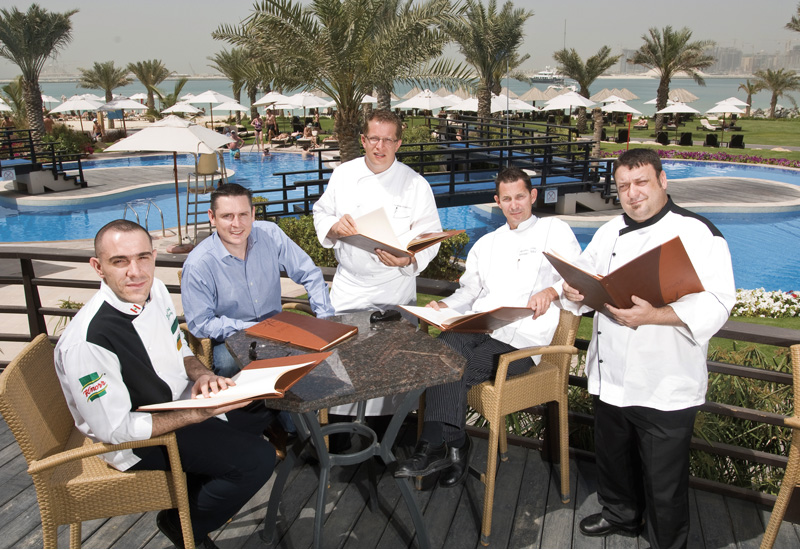Richy: Going back to the fresh produce issue, I believe where there’s a will, there’s a way; if you are a good chef you will be able to create dishes that are excellent using whatever is in season.
Impiazzi: That’s the great thing about cooking — whatever product you want is always in season somewhere in the world.
Richy: You just have to make sure the quality is really good. And you have to accept that an excellent product that is naturally in season somewhere else in the world may be a bit more expensive than if bought from a hot house.
How do fluctuating food prices affecting your menus?
Eberle: We are constantly trying to serve value-for-money food. Price-hikes on individual products only partially affecting menu prices — it’s still our philosophy to serve guests the very best product available.
Zuberbühler: But prices keep going up; this is part of the business and even the guests are aware and they accept it. However top-quality products are becoming very expensive; it’s not rice that influences our cost, but meat, seafood and other delicacies.
Impiazzi: With the oil-price rise, I think a lot of suppliers took advantage of that; they jacked their prices up ridiculously. I mean, I know what things cost in Europe; I make it a point to check. And if I’m paying three times the price I know they’re having me over a little bit and you have room to negotiate.
But now, with the exchange rate the way it is, I’ve seen big drops — especially with fresh fish, which helps. And hopefully we’re in a position to pass that saving on to the customer.
Richy: I think some chefs go for lower-priced product, which then means lower quality. You always have to look for excellent quality in food, with the maximum value you can get. It might seem like a cost-effective plan, but it’ll come back on you.

Advertisement
Impiazzi: When time are tough, you don’t compromise on food quality — you make a decision and if you can’t justify staying open, you close.
Fivaz: One thing we can’t forget is that we’re in the middle of a global situation and that’s affecting everybody. As a result you have to get your pricings right. If you don’t, you’ll end up with an empty restaurant.
I was at Taste of Dubai recently and I saw the menu of a particular restaurant where the average starter used to be AED 120 (US $33) and the average main course from AED 200-500 (US $54-136); but they had dropped prices as low as AED 70 (US $19) for a starter and AED 90-200 (US $25-54) for a main. That’s a trend that’s really happening now — you’ve got to look at your guests. Dubai relies on its tourists and if there are no tourists there are no jobs, so in your restaurants you’ve got to look at who you’re getting into the hotel and offer them the best you can.
Impiazzi: This is where our suppliers are important, because they need to realise this as well.
Gradnitzer: We also need to be careful we don’t drop into a hole. I do think you’re right, but that does not mean we should start chopping, chopping, chopping. Yes, we will chop prices, I agree. But you do need to look at your profit margins sometimes. I think the danger is that if you chop prices, you chop quality of product. You start feeling it in certain restaurants.
Fivaz: I don’t think it’s about dropping quality, I think it’s about re-engineering and getting better value, pushing your suppliers. You can either have an empty restaurant or a full restaurant, at the end of the day; if you don’t drop your prices in this current state, then next year we’ll be talking about who’s not there.
It’s all about your engineering; I mean, Japanese Kobe beef has just come on the market. In Hunter’s Room and Grill I wanted to put it on the menu, but unfortunately there’s no way — it’s a luxury. So I’ll just stick with my Australian Wagyu. It’s about tightening your margins and still getting good return.









 Search our database of more than 2,700 industry companies
Search our database of more than 2,700 industry companies









